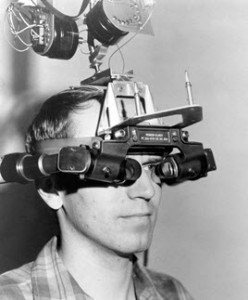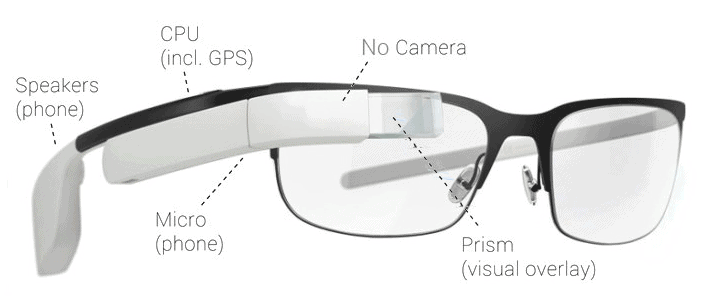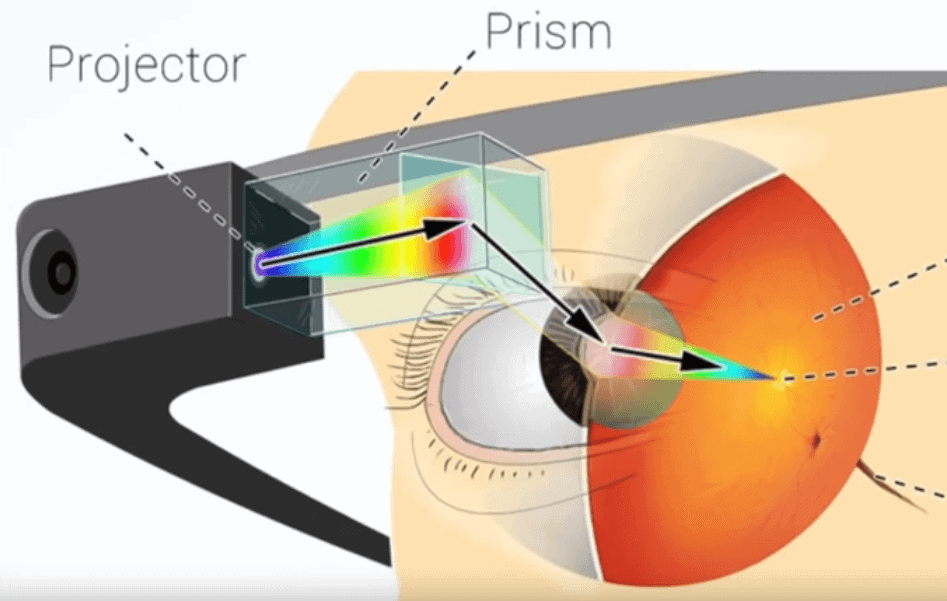My guess is that many of you have heard of the term “smart glasses”. But what exactly makes a pair of glasses smart, what technology is used and what can you do with them in real life? I have done some research on the topic and will try to answer these and other questions in the following article.
Smart glasses (or smartglasses) are wearable devices that add useful information and functionalities alongside or to what the wearer would normally gather from the real world.
The added info can be shown visually before your eyes through the display of the glasses or you can get instructions, notifications and answers to your questions in audio form.
Smart glasses can do a variety of things for you. Among others:
- Send and answer messages and phone calls
- Take photos and videos from your point of view
- Manage your calendar / appointments and get pop-up reminders
- Turn-by-turn GPS navigation
- Interact with apps (Search, fitness tracking, music, Uber, …)
They also have endless use cases for enterprises. Some examples:
- Warehouse workers can get real-time information about orders / inventory and move around with both their hands free
- Manufacture / building companies can display real-time assembly instructions for their employees.
- Medical doctors can record and document patient interaction real time and view medical information from previous visits.
This list is only scratching the surface of what smart glasses can potentially do for regular users as well as enterprises. But let`s start from the beginning.
Finding Correct Definition For Smart Glasses
While reading materials from different sources, I quickly found out that there are many different interpretations for what smart glasses are. When trying to conclude, most resources describe them as computerized eyewear that displays useful information”
Wikipedia defines them as following and also adds an alternative definition:
“Smart glasses are wearable computer glasses that add information alongside or to what the wearer sees. Alternatively smart glasses are sometimes defined as wearable computer glasses that are able to change their optical properties at runtime”
I have a small problem with these definitions. They indicate that humans only gather information visually or that smart glasses themselves are only display-based. Neither statement is accurate.
For Example, Zungle has released sunglasses which do not add anything smart to the visual side (regular dimmed lenses). However, the glasses can be used to answer phone calls, listen to music and communicate with virtual assistants (Siri, Google, Bixby).
Bose has also come out with audio augmented reality glasses. Nothing display-based, but I would definitely call them smart. There are also many other smart glasses where audio form is used to transfer information (in addition to display).
What mixes things up even more, is the addition of non-computerized glasses to the definition. More precisely glasses are able to change darkness of the lenses based on light conditions.
There are probably more corner cases here (for example glasses vs headsets, glasses for color blind and others). In most case I would say it is correct to define them as wearable devices that add information and functionalities alongside or to what the wearer would normally gather from the real world.
Brief History Of Smart Glasses

The beginning of smart glasses can be said goes back to as far as the 1960s. In 1968, computer scientist Ivan Sutherland created (with the help of his students) The Sword of Damocles. This device is widely considered to be the first virtual reality head-mounted display system.
The device would track wearer`s head movement and display different wireframe rooms based on where the wearer was looking.
Through 1980s and 1990s, Canadian researcher Steve Mann worked on his WearComp (wearable computer) solution which paved and showed the way to computerized smart glasses.
If you want to go a bit deeper in the history and evolvement of smart glasses, CNET published a great article with visual illustrations about the topic.
All the small advancements in the field eventually lead to the first attempt at a widespread consumer product. In 2013, Google released Smart Glass to developers and early adopters.
With technological advancement and lessons learned from the Google Glass launch, companies are once again taking a stab at smart glasses for the general public.
It seems to me that the current trend and focus for companies is to develop glasses that look discrete and normal to the outside observer. Focals By North, Vue and Intel`s Vaunt (project was later dropped) are all heading in this direction.
How Do Smart Glasses Work? Technology Overview
Next I will try to give a brief overview about how smart glasses work and technology components that are involved. Since I am no expert (only a hobby enthusiast), we won’t be going in-depth here, but rather try to cover the basics.

Display
Digital visual information added on top of what we see from the real world is probably the most crucial part of smart glasses in the long run. It is also the part that is most holding smart glasses back technology wise at this moment.
There are two main technological approaches to achieve partially transparent displays that are able to mix digital images with the real world.
Curved Mirror Combiner
First of them is called curved mirror (or curved combiner). With this well explored technological approach it is a game of trade-offs. It is possible to achieve relatively small and light device, but with limited resolution and field of view. Google Glass is the most well known examples of this approach.

The resolution and field of view can be improved with curved combiner solution. This however comes with the trade-off of device becoming bulkier and images getting less crisp and detailed. Meta 2 headset is an example that follows this path.
Waveguide hologram
To overcome the trade-off game and limitations with the curved mirror solution, companies are investing into alternative waveguide holographic optics approaches.
This technological path promises improved field of view and resolution with reasonable device size. However, the technology is still very much in development phase and there has been little real-world proof that this approach works better than the traditional curved mirror implementation
Some examples of products that have implemented waveguide optics for visual display are Microsoft Hololens, Focals By North, Magic Leap.
If you want understand in more detail how the two display approaches actually work, I suggest reading the following detailed answer on Quora. And if you are the kind of person, who breathes optics and wants really in-depth knowledge, Karl Guttag`s blog is for you.
Audio
Most smart glasses have both audio inputs (microphone) as well outputs (speakers). The microphone can be used to control the device and also do voice searches.
Speakers are there to give you audio feedback and notification. You can also listen to music, podcasts and other forms of audio education and entertainment
In most cases smart glasses do not use regular earbuds to transfer audio into your ears. Instead, a method called bone conduction is used to conduct the sound (from audio frames of the glasses) into your inner ear through the bones of the skull.
People who use bone conduction audio devices for the first time, often say it’s a weird experience, where it feels like the sound is indeed coming from inside your head (rather than through the ears with regular headphones or earbuds).
Controlling Smart Glasses
Due to the placement of the glasses (on your head) it is quite hard to implement regular keyboard or mouse for interacting the device. Smart glasses therefore use different ways you can interact with the device (often several methods combined)
Some glasses use touchpads and buttons located on the frame. You can control the device by tapping, holding down, or swiping the controls. Google Glass implemented the latter in combination with voice recognition which is another common way to interact with smart glasses.
Other glasses are controllable by compatible devices, such as your phone or a separate control unit. Focals by North for example use a ring that you wear and control the device that way.
Currently less common ways to interact with smart glasses are gesture recognition (such as nodding, looking up/down), eye tracking and brain-computer interface (controlling device with your thoughts). The latter methods are harder to implement, but could definitely be used more in the future.
Camera
Cameras nowadays have become advanced and small enough that you can easily incorporate them into the frame of smart glasses. And they can make high quality pictures and videos of your experiences and activities.
In theory, this all sounds nice. One would therefore expect camera to be crucial part of smart glasses. There is a “but” here however – privacy concerns.
People don’t like the idea that people wearing smart glasses could be secretly filming them. This was also one of the reasons Google Glass received a lot of negative reactions when it was released.
In order to combat the privacy concerns and insufficient legislation, several companies have lately launched smart glasses (aimed at general public) that do not have camera in them (Vue, Focals By North).
Applications and Use-Cases In Real World
There are endless possibilities and use cases where smart glasses could help people do things in a more convenient and effective way. In many cases they already are doing exactly that. See my post describing how Google Glass is used by enterprises.
We are next going to unveil different areas where people and companies could benefit from the use of smart glasses. This won’t be a detailed description, but rather a brief listing to give you an idea about the possibilities and get your creative juices flowing. So, let does begin.
Collaboration
Smart glasses offer the possibility of collaboration. Think about surgeons for example, who are able forward real-time point of view video to other colleagues and consult with them while doing an operation.
Or let’s say that your car breaks down in the middle of nowhere, but you have a friend who is a car mechanic. You could video chat him, showing him what you see, while having both hands free to act based on his/her instructions.
The latter model could also be applied in customer support. Employees could help each others with more complex tasks without having to physically present themselves. You as a customer, could contact your service provider and also ask for instructions through video.
Process effectiveness
There are various processes and activities that smart glasses can help solve in a more a efficient way.
Think about GPS navigation, where real-time turn by turn navigation instructions are overlaid on the roads/buildings in a natural and unobtrusive way.
Product assembly workers could get step by step visual instructions about which details go together and in which order. New employees could do hands-on work tutorials and significantly increase the learning curve of obtaining new knowledge and skills required for the job.
Warehouse workers know instantly which items an order consists of and where they are located on the premises. They can move around freely, without having to deal with paperwork or sit down behind a computer.
Medical doctors can focus on the patients and leave the documentation and management side to technology. They can retrieve required information from previous visits while interacting with the patient and not staring at the computer.
House planning
Smart glasses could help people get a feeling (through digital projection) about how certain colors / furniture / etc would match together.
Think about an empty room where you are able to digitally place a piece of furniture you are thinking of buying. Or how about visualizing the colors of the walls or type of floor. You would see them as if they were physically there and decide if the combination is good.
Or what about a buying a house that doesn’t yet exist? It would be possible to put on a pair of smart glasses and walk around a building that is at an idea/design level. You could understand and feel the little quirks and make changes accordingly if required.
Life documentation
With glasses that are always there, you could document all the little exciting bits and pieces of your life. Your hands are free and you are able to do anything that you would normally do (not the case with mobile). Video camera glasses also perfect for do-it-yourself guides and tutorials.
Entertainment And Fun
Virtual Reality solutions already gaining quite a lot of traction and offer the possibility for games and entertainment that are more interactive and movie-like than before.
You can also combine the real world with augmented reality and have a virtual pet in your house who you have to take care of. Or think about the scenario, where you are lying on couch and suddenly hear strange voices from the basement. Bad guys have entered your house and you are the one who has to save the day!
There really are a lot of areas where smart glasses could be beneficial to us. I will probably make a separate post just about this topic in the future.
Conclusion
In this article I talked about what smart glasses are and why it is quite hard to find a one-fits-all definition for them.
We briefly looked at the history of smart glasses and how they have evolved from products such as “The Sword of Damocles” and “WearComp” up to the point where we are currently at.
We summarized the two main technological approaches to how the displays of smart glasses work (curved mirror combiner, wave guide hologram) and listed other components that smart glasses include.
Finally we concluded that there are several fields in the real world where smart glasses can be beneficial. Among others, these fields are collaboration, customer support, product assembly, life documentation and various forms of entertainment.
